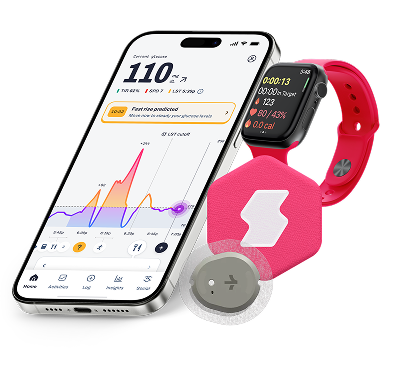Beetroot, often celebrated for its vibrant color and earthy flavor, goes beyond its culinary appeal to offer potential health benefits.
Not only is beetroot rich in essential nutrients, but understanding its impact on glycemic index provides valuable insights for those managing conditions like diabetes. The article aims to provide a comprehensive understanding of beetroot's glycemic index and its significance in promoting overall health.
Sign up to be the first to know about special offers and exciting Signos news.
Glycemic Index Table
The glycemic index (GI) of beetroot, based on a serving size of 100g, is approximately 64.¹ This value categorizes beetroot as a medium-GI food. In terms of carbohydrates per serving, beetroot contains around 8.9 grams (g) of carbohydrates. The Glycemic Load (GL) per serving can be calculated by multiplying the GI by the carbohydrate content and dividing by 100, resulting in a GL of approximately 5.66.
Understanding the glycemic index is crucial for individuals managing blood sugar levels, as it measures how quickly a food raises blood sugar. Foods with a low GI are absorbed more slowly, leading to gradual increases in blood sugar levels. Beetroot's medium GI suggests a moderate impact on blood sugar, making it a reasonable choice for individuals seeking balanced carbohydrate intake.
Additionally, it's worth noting that cooking methods may influence the glycemic index, with boiled or roasted beetroot potentially having different effects on blood sugar compared to raw beetroot.

Nutritional Facts
Beetroot is a nutrient-dense vegetable, rich in essential vitamins and minerals. A 100g serving of beetroot contains approximately 43 calories, 1.6g of protein, 0.2g of fat, and 8.9g of carbohydrates, including 1.6g of dietary fiber.² Additionally, beetroot is a good source of folate, potassium, and vitamin C, contributing to its overall nutritional value.²
The nutritional information below is for 100 g of beetroot.²
Nutritional Facts

Is Beetroot Good for Weight Loss?
Beetroot can be a valuable addition to a weight loss-oriented diet due to its low-calorie content, high fiber levels, and various nutrients. The fiber in beetroot promotes satiety, helping individuals feel fuller for longer periods potentially reducing overall calorie intake. Moreover, beetroot is a good source of vitamins and minerals, contributing to a well-rounded and nutritious diet essential for sustainable weight loss.³
Is Beetroot Good for People Living with Diabetes?
Beetroot can be a safe and beneficial addition to the diet for individuals with diabetes, thanks to its moderate glycemic index and rich nutritional profile. Its moderate carbohydrate content and high fiber levels contribute to better blood sugar control. Studies suggest that beetroot consumption may even have potential anti-diabetic effects, such as improving insulin sensitivity.³
Better health starts here.
Sign up for tips and insights that work for you!
Allergies
While beetroot is generally considered safe for consumption, individuals may experience allergic reactions, albeit rare. Allergic responses to beetroot can manifest as itching, swelling, or hives, and severe cases may lead to anaphylaxis. It's important to note that cross-reactivity with other allergens, such as pollen or certain foods, may contribute to beetroot allergies.

References
References
- The University of Sydney. (2023, May 1). Glycemic Index – Glycemic Index Research and GI News. https://glycemicindex.com/
- USDA FoodData Central. (2022, October 28). Food Details - Oats, whole grain, steel cut. https://fdc.nal.usda.gov/fdc-app.html#/food-details/2346397/nutrients
- Clifford, T., Howatson, G., West, D. J., & Stevenson, E. J. (2015). The potential benefits of red beetroot supplementation in health and disease. Nutrients, 7(4), 2801–2822. https://doi.org/10.3390/nu7042801




.svg)
.svg)
.svg)
.svg)
.svg)
.svg)
.svg)
.svg)
